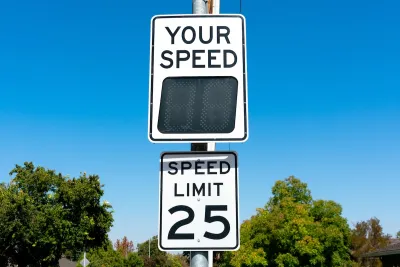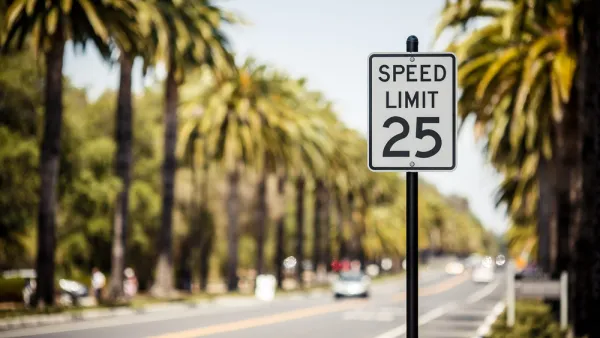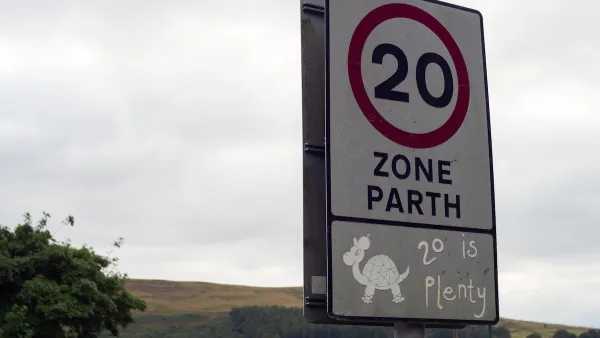More than half of drivers would be comfortable with speed-limiting technology or audio and visual signals warning them they’ve gone over the speed limit.

A new survey from the Insurance Institute for Highway Safety (IIHS) shows that over 60 percent of the more than 1,800 drivers surveyed wouldn’t mind if their cars provided ‘audible and visual’ warning signals when they exceed the speed limit.
According to a piece in GovTech by Dave Werner, “about half of drivers say they wouldn’t mind technology that makes the accelerator pedal harder to press or automatically restricts speed.”
The survey reveals a surprising level of comfort with speed governing technologies, also known as Intelligent Speed Assistance (ISA), hinting that their adoption may not be as difficult in the United States as some have hypothesized. This matters because “Any version of ISA likely to be adopted in the U.S. would give drivers the option to switch it off, so it will only be beneficial to the extent that the public finds it acceptable.” The European Union is already requiring the technology as of this July.
As Werner explains, “More robust ISA systems sound a warning or flash an alert when the driver exceeds the limit — or when they exceed it by more than a specific amount. Others provide accelerator feedback — making the pedal harder to push — or restrict power to the engine to prevent the driver from going too fast.”
An even higher number of respondents said they would like to see the speed limit prominently displayed (80 percent), while 70 percent wanted an unobtrusive tone to notify them of speed limit changes, signaling a preference for ‘advisory systems’ over those that physically intervene.
FULL STORY: Study: Most Drivers OK With Anti-Speeding Technology

National Parks Layoffs Will Cause Communities to Lose Billions
Thousands of essential park workers were laid off this week, just before the busy spring break season.

Retro-silient?: America’s First “Eco-burb,” The Woodlands Turns 50
A master-planned community north of Houston offers lessons on green infrastructure and resilient design, but falls short of its founder’s lofty affordability and walkability goals.

Delivering for America Plan Will Downgrade Mail Service in at Least 49.5 Percent of Zip Codes
Republican and Democrat lawmakers criticize the plan for its disproportionate negative impact on rural communities.

Test News Post 1
This is a summary

Test News Headline 46
Test for the image on the front page.

Balancing Bombs and Butterflies: How the National Guard Protects a Rare Species
The National Guard at Fort Indiantown Gap uses GIS technology and land management strategies to balance military training with conservation efforts, ensuring the survival of the rare eastern regal fritillary butterfly.
Urban Design for Planners 1: Software Tools
This six-course series explores essential urban design concepts using open source software and equips planners with the tools they need to participate fully in the urban design process.
Planning for Universal Design
Learn the tools for implementing Universal Design in planning regulations.
EMC Planning Group, Inc.
Planetizen
Planetizen
Mpact (formerly Rail~Volution)
Great Falls Development Authority, Inc.
HUDs Office of Policy Development and Research
NYU Wagner Graduate School of Public Service





























